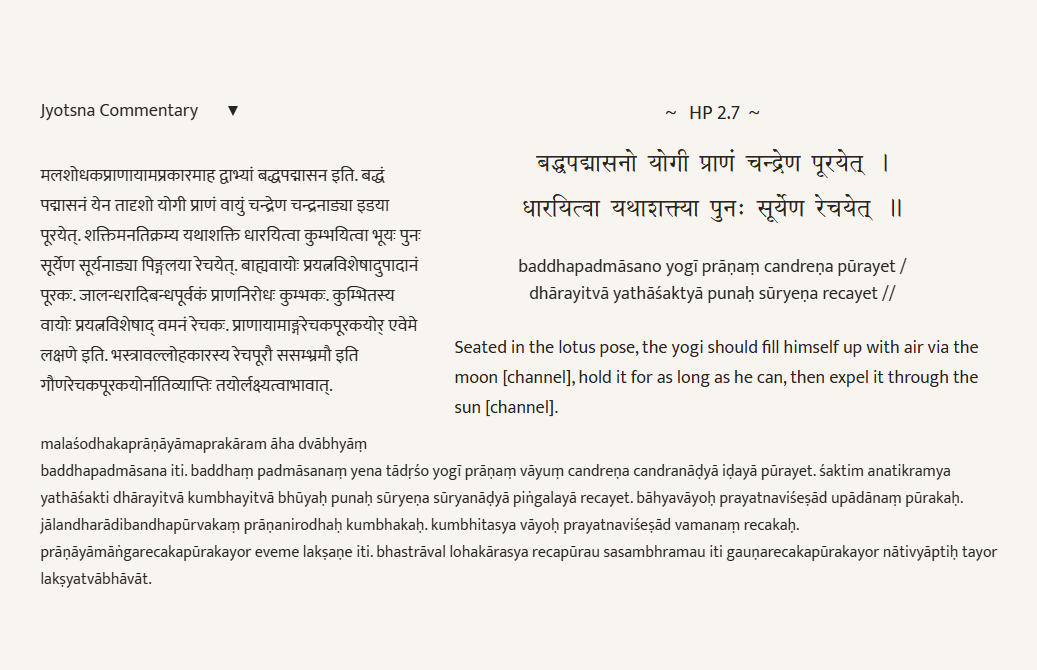
2024
The Haṭhapradīpikā, arguably the most important premodern text on physical yoga, has recently been published in an online beta edition
. The Haṭhapradīpikāwas authored by Svātmārāma, the first professedly human author of a haṭha yoga text, in the 15th century. This is the first text to focus on haṭha yoga, the first to include the term haṭha in the title and the first to teach complex postures (āsanas). The Haṭhapradīpikā The Haṭhapradīpikā impacted most subsequent textual sources on yoga, influenced physical yoga on the eve of colonialism, and continued to be central as yoga spread globally from the late 19th century. The online beta edition is the first output of a three-year collaborative research project to collate a critical edition and produce an annotated translation of the text. This note introduces the edition and the processes behind its production.Hosted between Germany and the UK, the three-year project was led by scholars at Philipps-Universität Marburg and SOAS University of London before moving to Oxford University. The project was funded by the Deutsche Forschungsgemeinschaft (DFG) (number 448419875) ) and the Arts and Humanities Research Council (AHRC) from January 2021 to January 2024. The project was a collaboration between scholars from Marburg—Prof. Dr Jürgen Hanneder, Dr Mitsuyo Demoto, PhD Candidate Nils-Jacob Liersch, and from SOAS and then Oxford—Prof. James Mallinson and Dr Jason Birch. The project was also supported by research assistants at the École française d’Extrême-Orient (EFEO) in Pondicherry, India
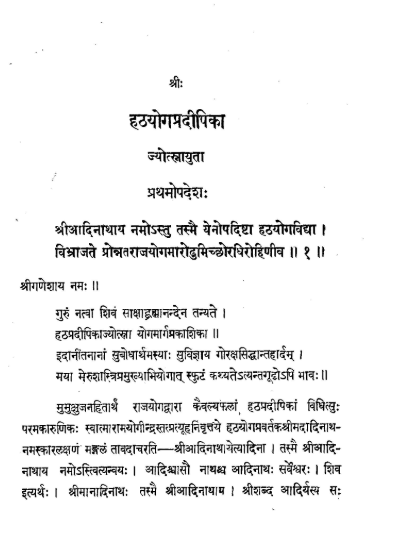
Some might query why a new translation was deemed necessary, as the Haṭhapradīpikā Haṭhapradīpikā has been translated hundreds of times into several languages. The Theosophical Society first published the text in 1893 with the Jyotsnā; commentary and a second edition appeared in 1933. The Adyar Library and Research Centre edited the Haṭhapradīpikā as published by the Theosophical Society in 1972 in Madras. The Kaivalyadhama critical edition was first published in 1970 in Lonavla with a second edition in 1998. These earlier editions and translations are based on at most nine witnesses which present widely divergent versions of the text, ranging from three to ten chapters. In contrast, this research project consulted an extraordinary number of manuscripts—over 200, the oldest of which dates to 1496, close to the dates of the author himself. The process was a true collaboration with each member of the team contributing a specialism, from stemma analysis developed by grouping the witnesses to grammatical reconstruction and translation. In order to work with such a large number of manuscripts the team identified and collated the most important sources and then identified marmasthānas, or passages with multiple variants that were nevertheless deemed crucial for tracing the transmission of the text. For these marmasthānas passages many more witnesses were collated.
The art of reading Sanskrit together was amply demonstrated at two week-long reading sessions held to support the project in the summers of 2022 and 2023. The project team invited colleagues to read the first two chapters the first year, and the second two the year after (this critical edition offers a four-chapter version of the text). Scholars who contributed to these readings included Diwarkar Acharya, Jacqueline Hargreaves, Harunaga Isaacson, Shanshan Jiao, Jacob Kyle, Philipp Maas, Nina Mirnig, Lubomír Ondračka, Alexis Sanderson, Sven Sellmar, Dániel-Péter Szántó and Judit Törzsök. I was delighted to join as well, as this is an extremely rewarding and collegiate way to read and learn.
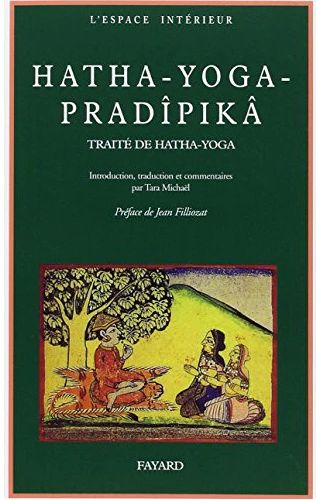
EThe research project brought forward the date of composition from 1450 to 1400. The critical edition follows the four-chapter structure seen in many manuscripts. Chapter one includes 15 āsanas and the withdrawal of senses (pratyāhāra); chapter two the ṣaṭkarmans and kumbhakas; chapter three the ten mudrās and chapter four nādānusandhāna and samādhi. Svātmārāma sought to synthesise ten texts out of which he drew extensively on eight. Over half of the text is direct borrowings from known sources. Of the remainder, 75% are authorial introductions, statements and signposts. The provenance of some verses remains uncertain, for example some on non-seated āsanas the six actions (ṣaṭkarmans), some breath retentions (kumbhakas) and inquiry into internal sound (nādānusandhāna).
The online beta edition of the text is an excellent resource. It allows the reader to toggle between viewing the main text alone or the main text in the centre of the screen annotated with philological commentary and testimonia. The way the philological information is presented is not possible in a print book and particularly valuable. The text can easily be searched for key terms or verse numbers making it easy to navigate. Further iterations of the text to be presented online will include alternative versions from the alpha or shortest text, demonstrating the different layers of textual development. This is of immense value: instead of narrowing the text into a single version this project presents the multiple Haṭhapradīpikā that developed over time. Of course, the team will produce a print book in addition to the online version. The project intends only to produce an English translation but it is to be hoped that translations of the edition into other languages will soon be undertaken.
A symposiumto launch the new digital edition was held at Oxford University on 23 February 2024 at which members of the core research team presented their findings. The event was recorded and is publicly available. Prof Mallinson presented on ‘The Composition of Svātmārāma Haṭhapradīpikā and made a cogent argument for Svātmārāma’s incorporation of elements of the text from oral vernacular sources and observation of practitioners.
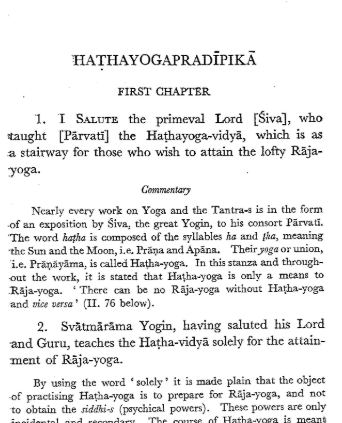
At the symposium Nils-Jacob Liersch presented on ‘Computer Stemmatics applied to the Haṭhapradīpikā". Liersch explained how computer stemmatics was deployed alongside traditional philological techniques to arrive at a plausible hypothesis for a stemma. He describes the hermeneutic process as including the production of computer-generated trees, reading, re-reading, editing and re-editing the text, alongside the structural analysis of the manuscripts. Thus, he argued that computer stemmatics alone would not suffice—it needed to be integrated with traditional philology. The use of computer stemmatics enabled the team to determine the most rudimentary and original structure of the Haṭhapradīpikā as well as a plausible stemma codicum.
Dr Mitsuyo Demoto presented on the ‘Development of the various recensions of the Haṭhapradīpikā”. Demoto demonstrated how meticulous structural analysis enabled the team to navigate and make sense of the various recensions of the Haṭhapradīpikā.
Dr Jason Birch presented on ‘Insights from the New Critical Edition of the Haṭhapradīpikā’. He stressed the fluid nature of the text that was subject to extensive revision and variation in its lifetime. He argued that the original material was rewritten and expanded to provide further information and clarify incoherence in the original. Further, he suggested the revisions reveal that many of the practices were controversial.
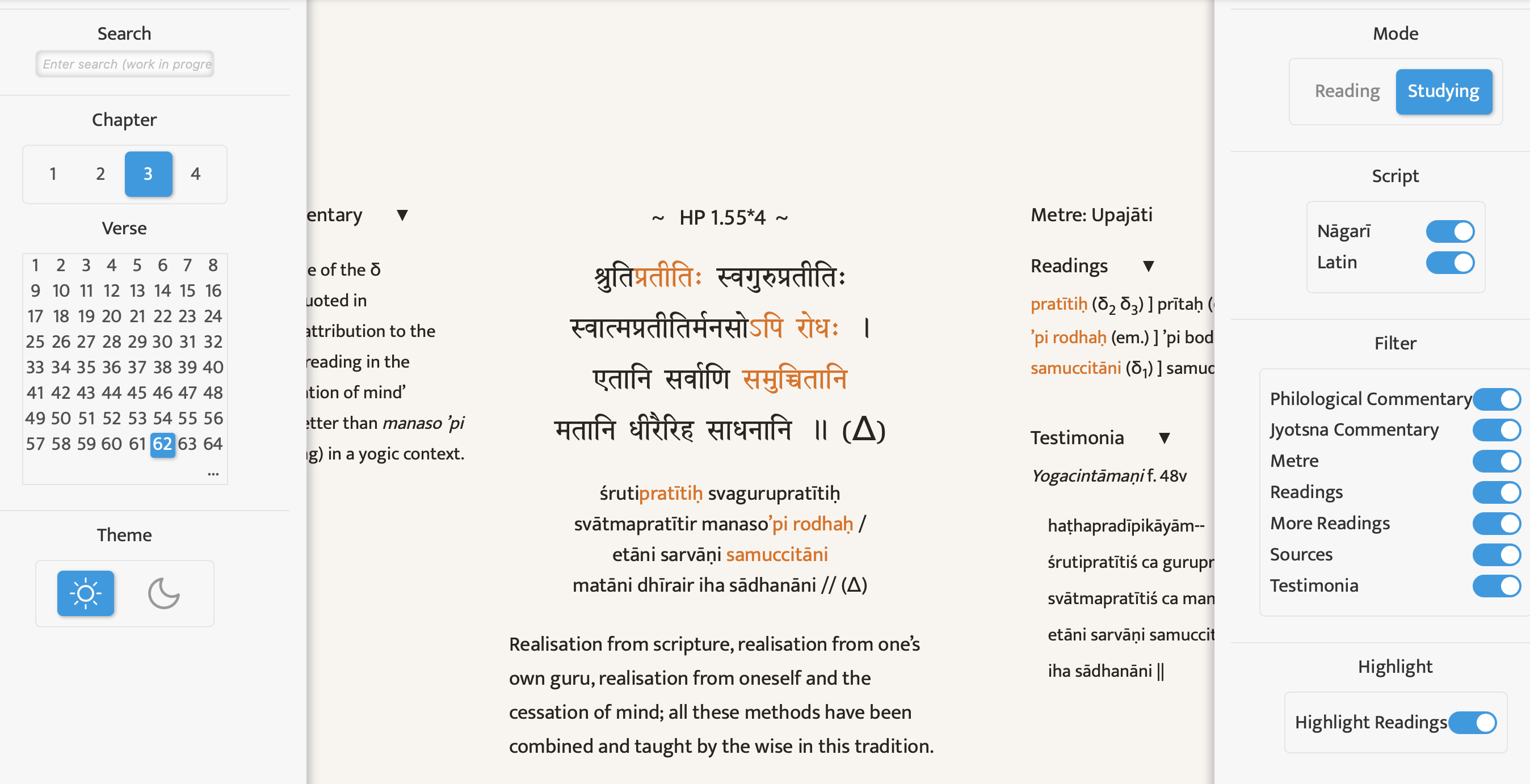
Finally, Prof. Jürgen Hanneder spoke on ‘Brahmānanda’s Commentary on the Haṭhapradīpikā. In discussing Brahmānanda’s Jyotsnā, considered by the project to be the vulgate, Hanneder suggests Brahmānanda found the text in the same disarray that we do. He views the Haṭhapradīpikā as a handbook or reference guide and explored the impact of Brahmānanda’s vedāntic adherence on the Haṭhapradīpikā. I had the honour of discussing the online beta edition with Prof. Hanneder at a symposium of new books on yoga studies. A recording of the interview will be available soon.
Another related, on-line symposium was organised by Daniela Bevilacqua and Lucy-May Constantini: The Yoga Studies Symposium: Celebrating 20 Years of Academic Engagement’‘ with many distinguished yoga studies scholars presenting their work. This attests the popularity, growth, and constant scholarly engagement that yoga has been having.
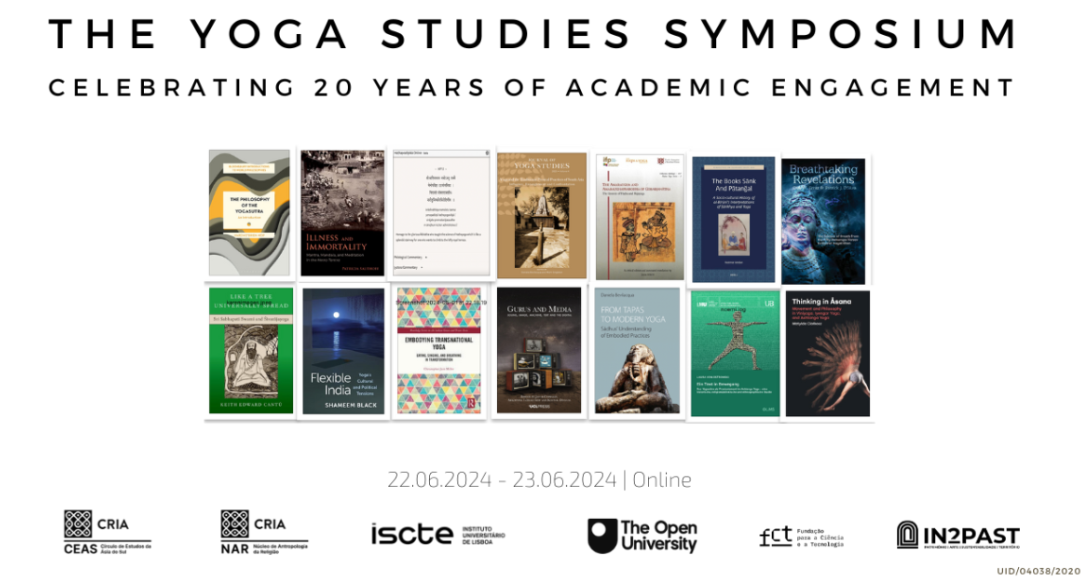
The online beta edition of the Haṭhapradīpikā demonstrates what is possible through careful and collaborative research integrating the best of traditional philology and computer technology. This is a groundbreaking edition and should be of interest to all practitioners and students of yoga.
Ruth Westoby is Visiting Lecturer in Asian Religions at Roehampton University, London.
yogadarsanayogasadhana estudiodelyoga yogastudies sanskritphilology proyectoyola yoga historiadelyoga yogatexts textosdeyoga ruthwestoby

Alberto Allende
Pedro Urbano
Designed by Jannette Ramírez Arámburo in LimeSurvey
All photographs and images in the Gallery, friezes and banners are mostly courtesy of Adrián Muñoz, and some provided by Borayin Larios. Some exceptions are:
We would like to give due credit to the owners of the images we have used in this site. If you own rights to any of these, please contact us and we will proceed accordingly.